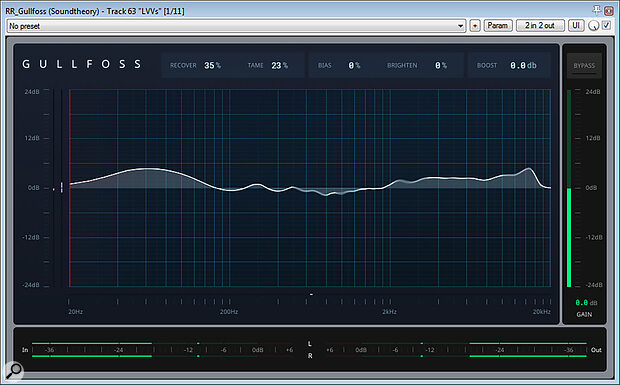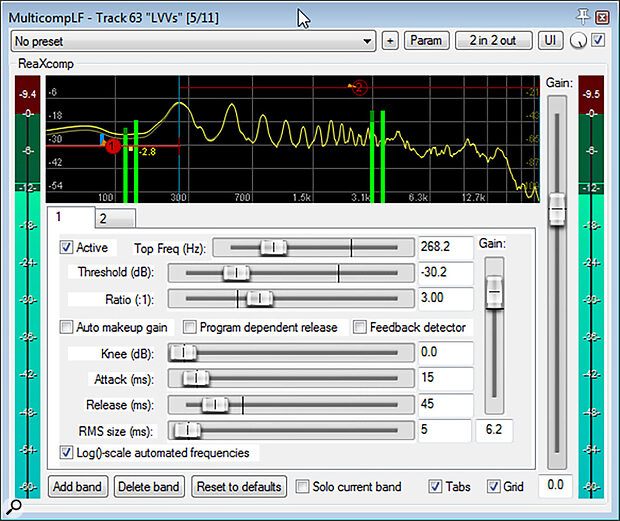 Photo: Antoni Shkraba Production
Photo: Antoni Shkraba Production
There’s more to crafting perfect pop vocals than slapping on a bit of compression and Auto‑Tune!
Of all the mainstream genres, pop arguably presents the highest bar to the mix engineer in terms of vocal production. The singer usually needs to sound bright, airy, and super‑up‑front, but without becoming harsh or abrasive. You want every detail of the artist’s phrasing and lyrics to come through clearly on the widest range of listening systems, but without making the backing sound weak by comparison. And you often need to adapt your mix settings in response to dramatic arrangement changes as well. In this article, I’d like to suggest a few tricks that I’ve found really useful for getting a polished end result.
1. Try Spectral Pre‑processing
There’s a family of specialist spectral‑processing plug‑ins that are usually associated with mastering and bus‑processing applications, and which use FFT‑based dynamics processing to enhance mix detail and smooth out mix tonality imbalances — I have in mind here things like Oeksound’s Bloom, Baby Audio’s Smooth Operator, and Soundtheory’s Gullfoss. I’ve found that these same algorithms can also deliver a useful improvement in tonal consistency when applied directly to lead vocal tracks. It’s usually difficult, though, to know exactly what’s going on behind the scenes with these plug‑ins, and exactly what each parameter’s doing, so I prefer to place them right at the beginning of the plug‑in chain, where they can’t mess with any of my other vocal processors. Spectral‑processing plug‑ins can be pretty heavy on both CPU load and in terms of latency too, so it’s not a bad idea to freeze such plug‑ins in your DAW once you’ve set them up.
 Although spectral‑processing plug‑ins such as Soundtheory’s Gullfoss are more commonly associated with mastering, they can also make solo vocal tracks more tonally consistent and therefore easier to balance.
Although spectral‑processing plug‑ins such as Soundtheory’s Gullfoss are more commonly associated with mastering, they can also make solo vocal tracks more tonally consistent and therefore easier to balance.
2. Tune By Hand
There are plenty of plug‑ins that are designed to automatically correct vocal tuning, but if you’re after a high‑class result then I’d strongly advise against taking that shortcut — by the time you have the degree of correction you need, you’ll also have ironed out all the singer’s expressive pitching nuances, as well as probably degrading the sense of vocal ‘air’ and mangling the consonants with processing artefacts. Instead, you’ll usually get better results if you just use simple pitch offsets to target the tuning specifically of the syllables that really need help. That way, you won’t have any unwanted tuning artefacts for notes that were already in tune, you don’t lose all those heart‑tugging micro‑level pitch variations, and you can avoid processing noisy signals like breaths and consonants, which in my experience don’t tend to respond well to pitch‑shifting.
3. Control The Extremes
 Multiband dynamics control at the frequency extremes can help compensate for tonal variations caused by the singer’s movements while...
Multiband dynamics control at the frequency extremes can help compensate for tonal variations caused by the singer’s movements while...
You are reading one of the locked Subscribers-only articles from our latest 5 issues.
You've read 30% of this article for FREE, so to continue reading...
- ✅ Log in - if you have a Digital Subscription you bought from SoundOnSound.com
- ⬇️ Buy & Download this Single Article in PDF format £0.83 GBP$1.49 USD
For less than the price of a coffee, buy now and immediately download to your computer, tablet or mobile. - ⬇️ ⬇️ ⬇️ Buy & Download the FULL ISSUE PDF
Our 'full SOS magazine' for smartphone/tablet/computer. More info... - 📲 Buy a DIGITAL subscription (or 📖 📲 Print + Digital sub)
Instantly unlock ALL Premium web articles! We often release online-only content.
Visit our ShopStore.
